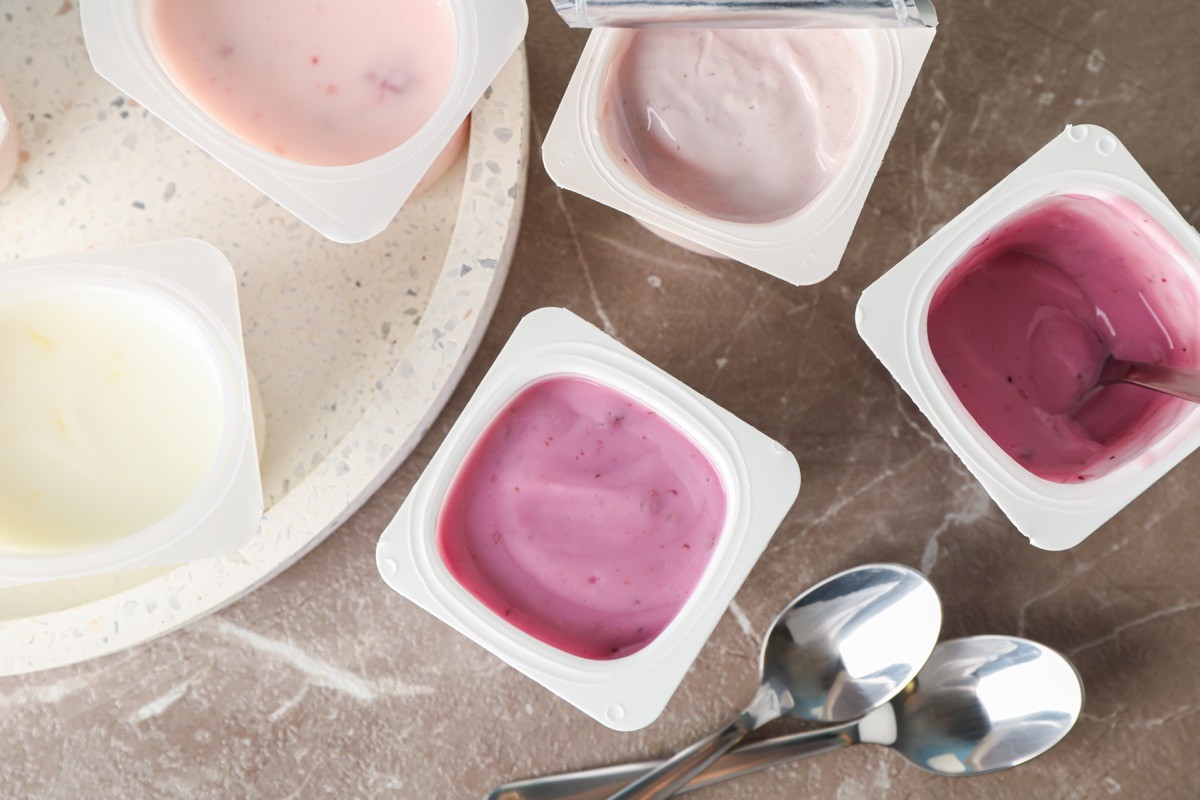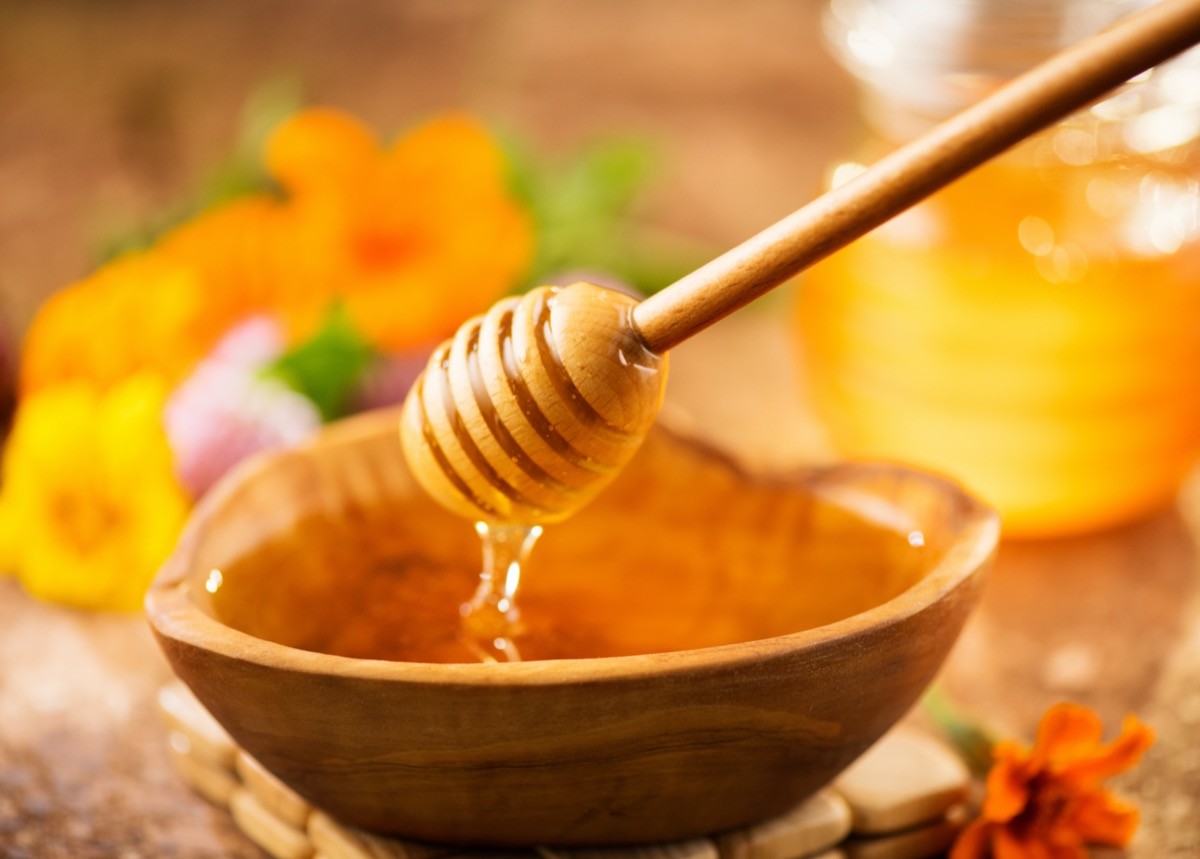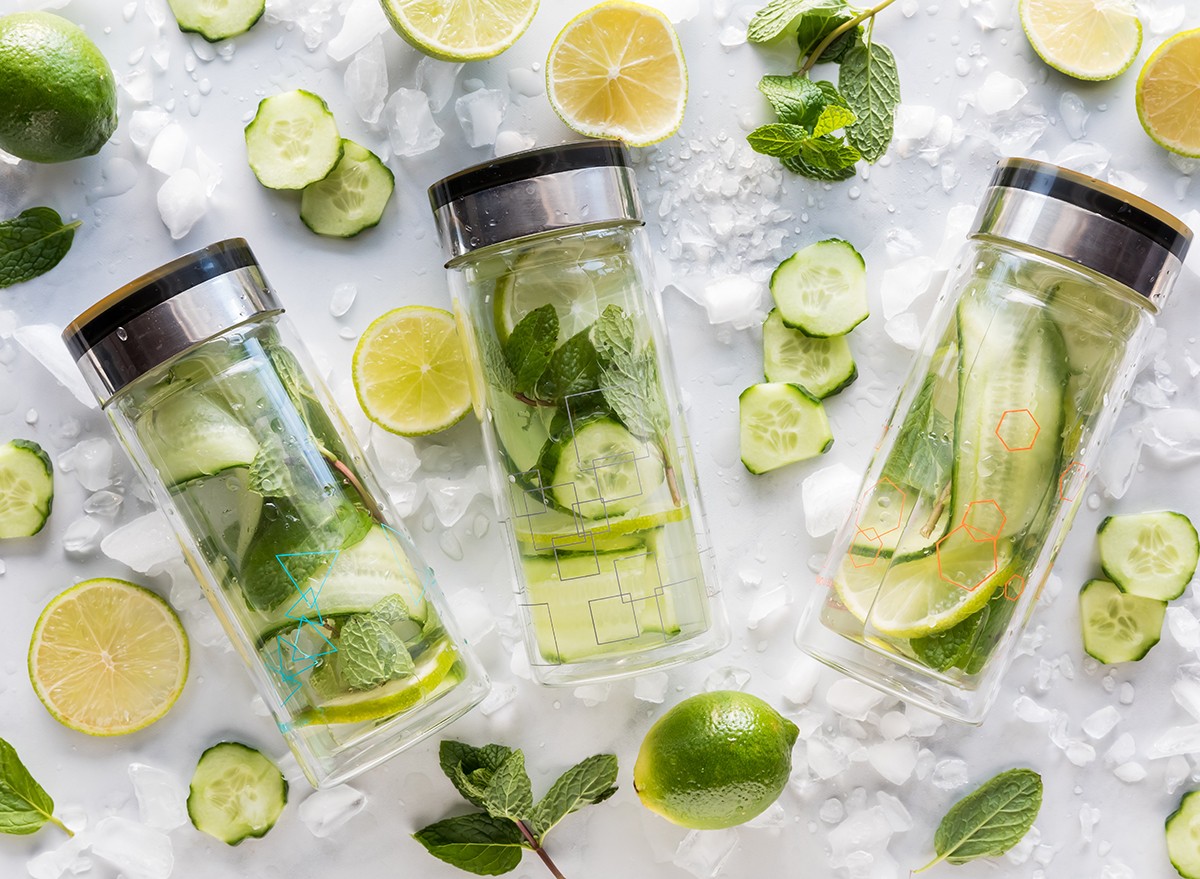11 Easy Ways to Cut Back on Sugar Without Giving Up Dessert

Cutting down on sugar is one of the best things you can do for your health—but being mindful about sugar intake doesn’t mean you have to give up a nice dessert after dinner. Small changes can help you cut back on sugar without feeling deprived. “Keeping tabs on how much sugar you’re consuming is an important part of a heart-healthy lifestyle, especially if you’ve been diagnosed with diabetes or prediabetes,” says the American Heart Association (AHA). “The empty calories from added sugars in desserts, sweetened beverages and candy can lead to weight gain and spikes in blood glucose levels.” Here’s how to have dessert without overloading on sugar.
RELATED: What Happens When You Stop Eating Sugar.
1
Adapt Recipes

You don’t have to give up your baking hobbies—simply adapt the recipes to have less sugar. “When baking cookies, brownies or cakes, cut the sugar called for in your recipe by one-third to one-half,” says the AHA. “Often you won’t notice the difference.”
2
Be a Label Expert

Always check the nutritional information on your dessert and look out for added sugars in particular. “On the nutrition label for food that comes in a package, review the section labeled ‘added sugars.’ This shows the total amount of added sugars per serving,” says UC Davis Health. “Look to buy food and beverages with zero or little added sugars.”
3
Avoid No-Fat Yogurt

Low-fat yogurts are notorious for being packed with added sugar. “A yogurt might be ‘low fat’ or even ‘fat free’, but if it’s flavored, the chances are it will contain added sugar,” says the British Heart Foundation (BHF). “Plain or natural yogurt still contains some sugar, but these are milk sugars found naturally in the milk it’s made from, and come with nutrients such as calcium.” A great way to enjoy a low-sugar dessert is pairing Greek yogurt with fruit such as blueberries.
4
Train Your Palate

Train yourself to appreciate lower-sugar desserts. “Low-and-no-calorie sugar substitutes mimic the sweetness of sugar, making them a good bridge if you’re trying to cut down on added sugars,” says the AHA. “These sugar substitutes can work as a short-term solution as you gradually train your palate to enjoy foods and drinks that are less sweet.”
RELATED: Over 40? Avoid These Diet Mistakes!
5
Creative Sweetening

A little bit of sugar goes a very long way. “Unsweetened products like whole-wheat cereal, oatmeal and Greek yogurt can provide great opportunities for healthy, creative sweetening – think a spoonful of fruit or a drizzle of honey,” says Northwestern Medicine. “This keeps you 100 percent in control of the amount of sugar you’re eating, and often adds fiber and protein to a meal that would otherwise have less.”
6
Be Picky About Sugar

Don’t drink your sugar calories—save them for your dessert. “Replace soda and juice with healthier options like low-fat milk, carbonated water, or unsweetened iced tea,” says UC Davis Health. “Water with some added flavoring from sliced lemons, cucumbers or mint is a great option, too.”
7
Avoid Ultra-Processed Desserts

There is a world of difference between a cake you bake yourself and a cheap one you buy at the store. “It’s easy to think of sugar in cakes, frosting, Oreos, soda and candy, but did you know there is a ton of added sugar in processed foods like white bread, tomato sauce, salad dressing and granola bars?” says Northwestern Medicine. “The more foods you make from scratch, the more control you have over the amount of sugar you’re consuming.”
8
Embrace Spices

Certain spices can make foods absolutely delicious without the need for tons of sugar. “Enhance foods with warm spices instead of all the added sugar,” says the AHA. “Try ginger, allspice, cinnamon or nutmeg.”
RELATED: Jillian Michaels’ Tips for Faster Fat Loss.
9
Portion Control

One way to continue to enjoy sweet desserts is to be mindful of portion size. To cut back on sugar, simply have a smaller amount of what you fancy. “Knowing the serving size helps you make sense of the rest of the label,” says the American Diabetes Association (ADA). “A single package may contain multiple servings. At a restaurant, a large soda cup typically holds two to three 12-ounce servings.”
10
Use Flavor Extracts

Using flavor extracts in food to provide a delicious taste without too much sugar.” Reduce some of the added sugar in recipes by using extracts, such as almond, vanilla, orange or lemon, to add some sweet scent without adding sugar,” says the AHA.
11
Treat Yo’self

If you’ve been eating sensibly during the week, just relax and enjoy your dessert once in a while without worrying too much. “It’s okay to treat yourself to a sweet item every so often,” says UC Davis Health. “For example, treat yourself to an ice cream on a Saturday night. Think of it as a real treat for sticking to a healthier diet throughout the week. You can also look to reduce the size of your soda or order a boba drink with a 50% sweetness level.”